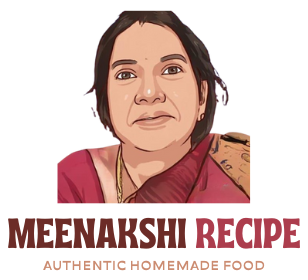A Burst of Flavor in Every Bite
Mango pickle is a culinary delight that has tantalized taste buds for centuries. Its vibrant flavors, rich textures, and the perfect balance of spice and tang make it a favorite across cultures. But have you ever wondered who invented this delicious concoction? In this blog post, we’ll dig into the intriguing history of mango pickle, explore its cultural significance, and understand how it became a staple in kitchens worldwide.
The Art of Pickling
The process of pickling is an ancient art that has been practiced for thousands of years. It involves preserving food in a brine solution or vinegar, which not only enhances the flavor but also extends the shelf life. This practice was particularly important before the invention of modern refrigeration. Pickling allowed people to enjoy seasonal fruits and vegetables all year round. But when did mangoes become a part of this tradition?
Mangoes Through the Ages
Mangoes have been cultivated in South Asia for over 4,000 years. Known as the “king of fruits,” they have a special place in cultural and culinary traditions. Originating from the Indian subcontinent, mangoes were treasured for their sweet taste and nutritional benefits. Over time, as trade routes expanded, mangoes spread to other parts of the world, gaining popularity wherever they went.
A Brief History of Indian Cuisine
Indian cuisine is renowned for its diversity and complexity. With its vast array of spices, flavors, and cooking techniques, it offers something for every palate. Among these culinary delights is the mango pickle, which holds a special place in Indian households. While it’s hard to pinpoint the exact origin of mango pickle, its roots can be traced back to ancient India, where the art of pickling was well established.
The Role of Spices
Spices play a crucial role in the creation of mango pickle. Each spice adds its unique note, contributing to the overall symphony of flavors. Common spices used in mango pickles include mustard seeds, fenugreek, turmeric, and red chili powder. These spices not only enhance the taste but also offer numerous health benefits. The use of spices in pickles reflects the rich culinary heritage of India.
Regional Variations and Innovations
Mango pickle is not a one-size-fits-all dish. Across India, there are countless regional variations, each with its unique twist on the classic recipe. In the northern states, you’ll find pickles with a sharp, tangy taste, while southern variations often have a hint of sweetness. These regional differences are a testament to the creativity and diversity of Indian cuisine.
The Cultural Significance of Mango Pickle
Mango pickle is more than just a side dish; it’s a cultural icon. It holds a special place in Indian households, often associated with family traditions and cherished memories. The process of making mango pickle is a communal activity, bringing generations together in the kitchen. It’s a tradition passed down from mothers to daughters, preserving not only fruits but also cultural heritage.
Mango Pickle Beyond Borders
While mango pickle originated in India, its popularity has transcended borders. Today, it is enjoyed in many parts of the world, from the Middle East to Southeast Asia. The global appeal of mango pickle is a testament to its irresistible flavors and versatility. It can be served with rice, bread, or even as a condiment in sandwiches and wraps.
Health Benefits of Mango Pickle
Beyond its delightful taste, mango pickle offers several health benefits. Mangoes are rich in vitamins A and C, while the spices used in pickling have antioxidant properties. Additionally, the fermentation process involved in pickling can promote gut health by introducing beneficial bacteria. Enjoying mango pickle in moderation can be a tasty way to boost your overall health.
How to Make Mango Pickle at Home
Making mango pickle at home is a rewarding experience. It allows you to tailor the flavors to your liking and create a product that’s fresher and more flavorful than store-bought varieties. To start, you’ll need raw mangoes, a selection of spices, salt, and oil. The process involves marinating the mangoes with spices and allowing them to ferment for several days. The result is a jar of homemade goodness that you can enjoy with your meals.
A Timeless Tradition
The beauty of mango pickle lies in its timelessness. Despite being centuries old, it remains a beloved part of culinary traditions worldwide. Its ability to adapt and evolve with changing tastes is a testament to its enduring appeal. Whether you’re savoring a spoonful of mango pickle with your meal or sharing a jar with friends, you’re partaking in a tradition that connects us to the past.
The Enduring Mystery of Its Invention
While we may never know the exact identity of the genius who first combined mangoes with spices and vinegar, we can certainly appreciate their legacy. The invention of mango pickle is a reminder of the creativity and resourcefulness of our ancestors. It’s a flavor-packed testament to the ingenuity of human cuisine.
Bringing the Story Full Circle
In conclusion, mango pickle is more than just a condiment; it’s a flavorful piece of history. Its origins may be shrouded in mystery, but its impact is undeniable. From ancient India to modern kitchens worldwide, mango pickle continues to delight with its bold flavors and rich tradition. If you haven’t tried making your own mango pickle yet, consider it a delicious adventure worth embarking on.
